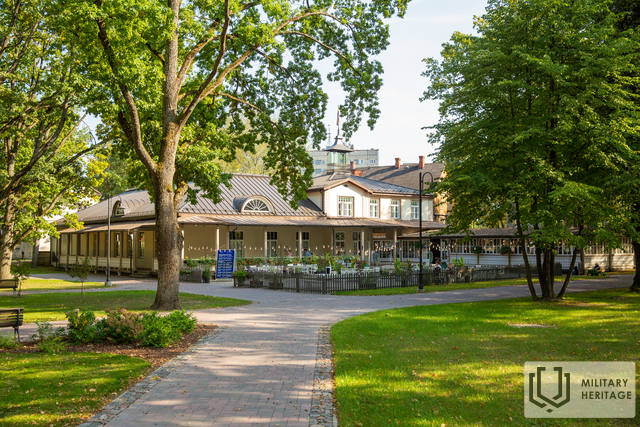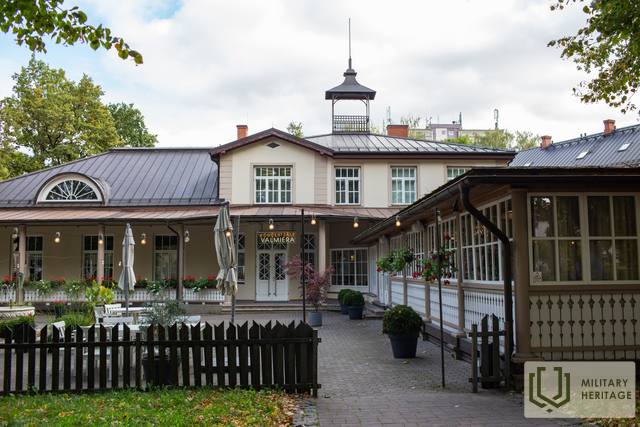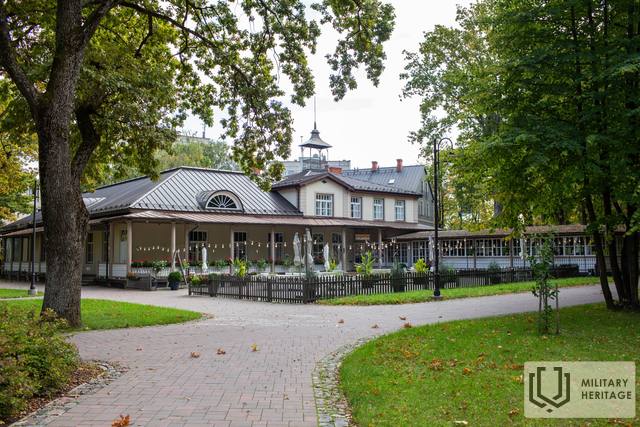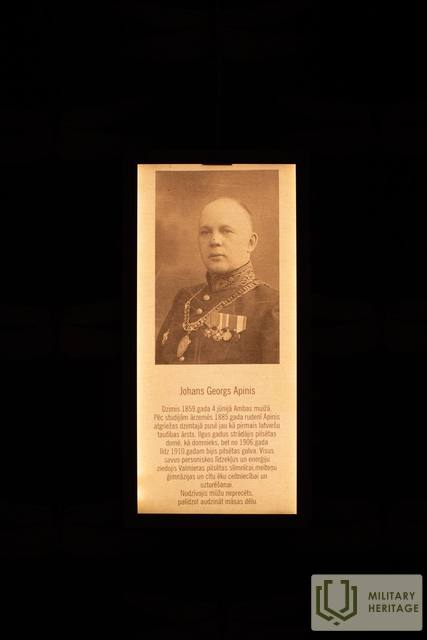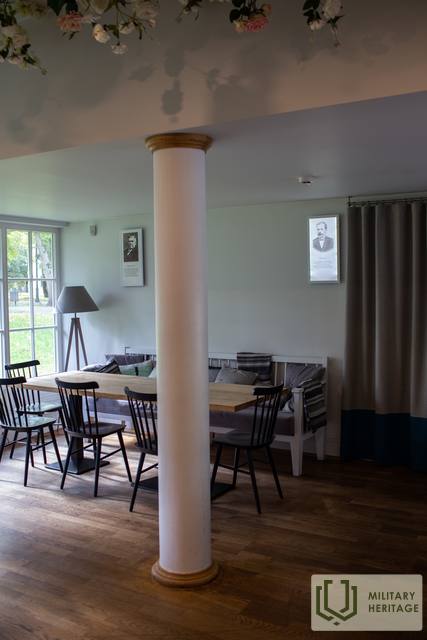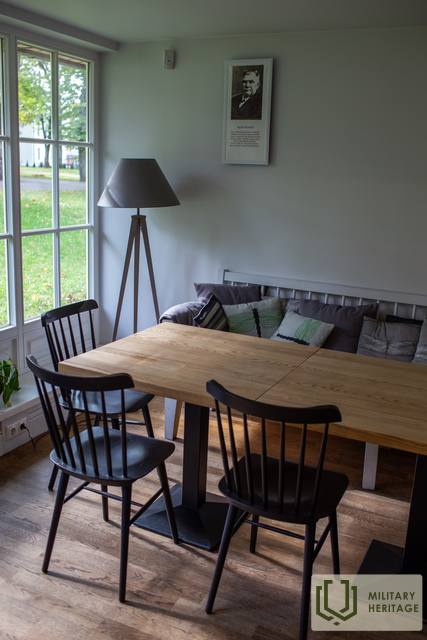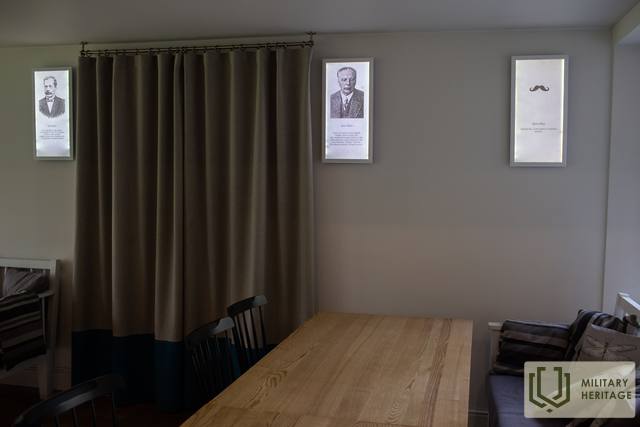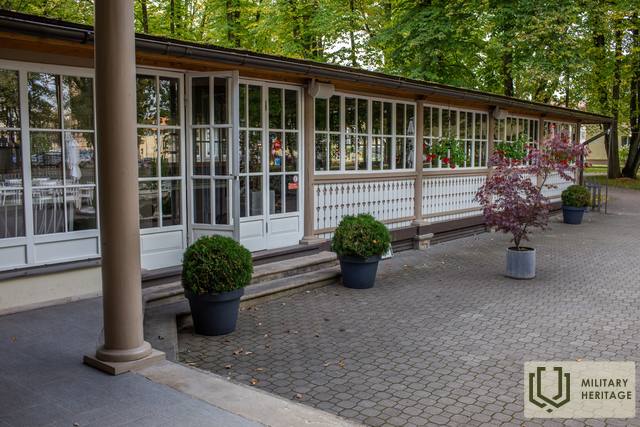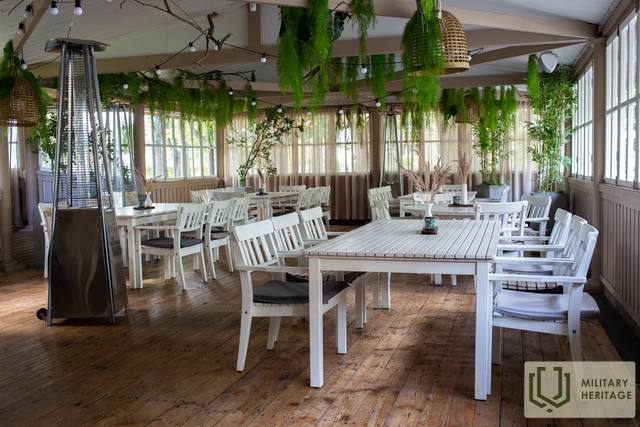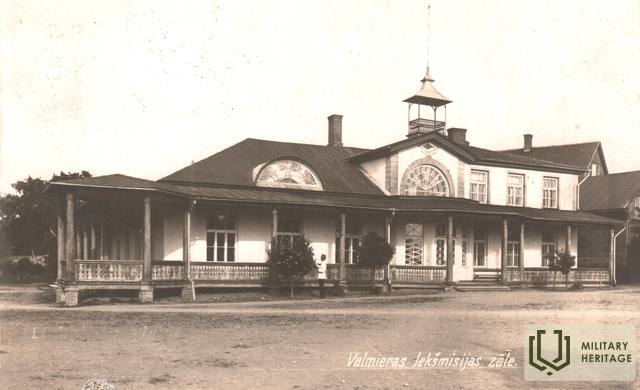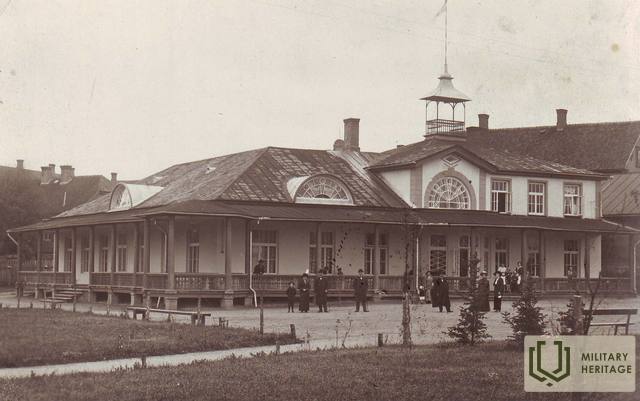Elnparkas ir koncertų salė „Valmiera“
Memorialinė vieta

Parkas yra Valmieros centre.
1914 metais aštuoni verslūs Valmieros gyventojai nusprendė tuo metu miesto pakraštyje įkurti parką su nealkoholinių gėrimų bufetu ir knygų stalu – taip prasidėjo Vecpuišių parko istorija.
Parko plėtros darbus nutraukė Pirmasis pasaulinis karas.
Jau karo pradžioje paviljono salėje buvo įkurta sužeistų kareivių ligoninė. Antrajame pastato aukšte buvo įsikūręs Valmieros Raudonojo Kryžiaus komitetas, jo centrinis aukų priėmimo punktas ir sandėlis.
Valmieros komitetas buvo vienas aktyviausių Latvijoje. 1914 m. spalį jis vadovavo 33 ligoninėms su 375 lovomis. Komitetas rinko lėšas ligoninių išlaikymui ir sužeistų kareivių gydymui, šiltų patalynės ir kelionės pinigų tiekimui pasveikusiems, sužeistų kareivių maitinimui, taip pat siuntė dovanas tiesiai į frontą. Vienas aktyviausių Raudonojo Kryžiaus komiteto darbuotojų, rinkusių lėšas, buvo Kārlis Ulmanis (1877–1942), vėliau tapęs pirmuoju nepriklausomos Latvijos ministru pirmininku.
Su Vecpuišių parku taip pat susijusi legendinių Latvijos šaulių batalionų įkūrimo istorija. 1915 m. rugpjūčio 4 ir 5 d. parke veikė savanorių verbavimo komitetas, o rugpjūčio 6 d. iš čia į mokymus buvo vežami jauni kareiviai. Vėliau iš čia į kareivius ne kartą buvo vežami ir jauni vyrai iš Valmieros bei apylinkių. Karo metu parke taip pat vykdavo įvairūs kultūros ir labdaros renginiai, tačiau visos surinktos lėšos buvo skirtos padėti nukentėjusiesiems nuo karo.
1918 m. lapkričio 18 d. Valmieroje pirmą kartą buvo iškelta tautinė vėliava kaip valstybės vėliava ir pirmą kartą sugiedotas naujasis himnas „Dieve, laimink Latviją“.
Antrojo pasaulinio karo metu Vecpuišų parko paviljono pastate buvo įrengta ligoninė, o šauliai buvo vedami į mūšius. Sovietų okupacijos metu, 1940 m. rugpjūčio 12 d., Valmieros miesto valdybos sprendimu parkas buvo pervadintas į Komjaunimo parką.
Po Antrojo pasaulinio karo architekto Freibergo suprojektuotas paviljonas buvo naudojamas ir kaip kultūros centras (iki 1966 m.), ir kaip sporto mokykla. Dešimtojo dešimtmečio pabaigoje (1998 m.) paviljonas Bakalauro parke vėl pradėjo veikti.
Restorano „Vecpuisis“ patalpose eksponuojamose nuotraukose įamžinti parko įkūrėjai.
Panaudoti šaltiniai ir literatūra:
Tālis Pumpuriņš, Cėsių istorijos ir meno muziejus
https://lr1.lsm.lv/lv/raksts/latvijas-perles/vecpuisu-parks-vieta-kur-romantika-saplust-ar-skaistumu.a69707/
https://www.valmiera.lv/lv/pilseta/dabas_teritorijas/skveri_un_parki/vecpuisu_parks/
http://www.periodika.lv/periodika2-viewer/view/index-dev.html?lang=fr#panel:pa|numeris:/p_003_xbrl2001n20|straipsnis:DIVL319|numerio tipas:P
http://www.periodika.lv/periodika2-viewer/view/index-dev.html?lang=fr#panel:pa|numeris:/p_003_xbrl2001n21|straipsnis:DIVL362|numerio tipas:P
Susijusi laiko juosta
Susijusi istorija
Jānis Lapiņš ir pirmasis Latvijos raudonos, baltos ir raudonos vėliavos projektas
Latvijos nacionalinės vėliavos sukūrimas vyko Pirmojo pasaulinio karo metais. 1915 m., kuriant Latvijos šaulių batalionų vėliavas, pavieniai menininkai siūlė raudonas, baltas ir raudonas vėliavų spalvas. Po pedagogo ir žurnalisto Janio Lapinio sumanymo, raudonai baltai raudoną vėliavą 1916 m. antroje pusėje pagamino jo mokinė, Valmieros pabėgėlių prieglaudos mokytoja Marianna Straumane. Tai pirmoji žinoma ir iš tikrųjų pagaminta Latvijos nacionalinė vėliava, kuri taip pat išliko iki šių dienų.
1917 m. kovas – svarbus mėnuo Valmieros ir Latvijos istorijoje
1917 m. kovo mėn., likus daugiau nei metams iki Latvijos valstybės paskelbimo, Valmieroje buvo įkurta Vidžemės laikinoji žemės taryba, kuri priėmė rezoliuciją dėl Latvijos autonomijos ir apsisprendimo teisių. Tarybos įkūrimo dieną posėdžių vietoje pirmą kartą buvo iškelta raudonai baltai raudona vėliava.




